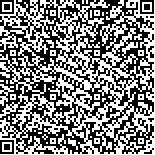| 摘要: |
| [摘要] 目的 观察在小儿全麻中全凭吸入安氟醚麻醉的安全性和麻醉效果。方法 90例年龄为1~7岁需在全麻下实施手术的患儿随机分为3组,每组各30例。Ⅰ组、Ⅱ组为常规全麻方法,分别采用氯胺酮、咪达唑仑、阿曲库铵(Ⅰ组)和氯胺酮、丙泊酚、阿曲库铵(Ⅱ组)进行全麻诱导和全麻维持。Ⅲ组采用吸入安氟醚患儿入睡后,静脉注射司可林全麻插管,插管后全凭吸入安氟醚进行全麻维持。分别观察麻醉前(T0)、全麻插管后1 min(T1)、手术即刻(T2)、手术后30 min(T3)、术毕(T4)以及气管插管后10 min(T5)的MAP、HR、SpO2、PETCO2的变化;检查T1、T4、T5时点的动脉血气值,记录各组术毕至清醒和拔管的时间;术后恶心、呕吐及难以安抚的哭闹的发生率。结果 各组的HR和MAP值在T1、T2时点,组内比较明显高于其它时点(P<0.05,T1、T2时点比较除外),组间比较,也明显高于其它时点(P<0.05,T1、T2时点比较除外)。SpO2值各时点组内、组间比较差异均无统计学意义(P>0.05)。Ⅲ组的T4时点PETCO2明显高于组内或组间不同时点之值(P<0.05)。各组pH值、PaO2同一时点的组内和组间比较差异均无统计学意义(P>0.05),Ⅲ组的T4时点的PaCO2值明显高于组内T1和T5时点之值(P<0.05),也高于其它T1、T5时点之值(P<0.05)。Ⅲ组的拔管时间、患儿的清醒时间明显短于其它两组(P<0.05);Ⅱ组患儿拔管时间及清醒时间明显短于Ⅰ组(P<0.05)。Ⅲ组麻醉费用明显低于其它两组(P<0.05),而患者哭闹的发生率明显高于其它两组(P<0.05)。Ⅱ组和Ⅰ组麻醉费用及恶心、呕吐及哭闹的发生率的比较差异无统计学意义(P>0.05)。结论 小儿全麻中全凭吸入安氟醚在除心血管手术以外的其他外科手术如神经外科手术、肝脏手术等的麻醉是安全可靠的,患儿苏醒快、气管导管拔除早、并发症发生率少、费用低。 |
| 关键词: 小儿 全麻 吸入麻醉 安氟醚 |
| DOI:10.3969/j.issn.1674-3806.2011.12.05 |
| 分类号:R 720.5 |
| 基金项目:柳州市科技局科研课题(编号:2007021314) |
|
| Clinic research of total enflurane inhaled anesthesia in general anesthesia for pediatric patients |
|
ZENG Jin, PENG Jun-hua, WANG Xue-fei, et al.
|
|
Department of Anesthesiology, the People′s Hospital of Liuzhou,Guangxi 545006, China
|
| Abstract: |
| [Abstract] Objective To observe the safety and efficacy of all total enflurane inhaled anesthesia in pediatric patients.Methods Ninety pediatric patients operated under general anesthesia were randomly divided into three groups, age from 1 to 7 yr, 30 patients in each group. Group Ⅰ was induced and maintained by ketamine, midazolam and atracurium. Group Ⅱ was induced and maintained by ketamine, propofol atracurium, while the group Ⅲ was induced with enflurane and succinylcholine, then maintained with enflurane. The change of MAP, HR, SpO2, PETCO2 was observed at the time before anesthesia(T0), 1 min after endotracheal intubation(T1), beginning of operation(T2), 30 min after operation(T3), end of the operation(T4) and 10 min after endotracheal extubation(T5). The artery blood gas values at 1 min after endotracheal intubation, at the end of operation and 10 min after endotracheal extubation were checked. The waking time from end of operation, the time of endotracheal extubation and the incidence of nausea, vomiting and crying were recorded.Results HR and MAP at T1, T2 were higher than those of other time points in each group and between each group(P<0.05),except the comparison between T1 and T2). The value of SpO2 was no significant difference (P>0.05). PETCO2 of group Ⅲ at T4 was higher than other points in this group and other groups (P<0.05). The value of pH and PaO2 are no significant difference at difference time point in every group and the same point between each group(P>0.05). The value of PaCO2 at T4 was higher greatly than that of at T1 and T5 in group Ⅲ and higher significantly than that of other groups at T1 and T5(P<0.05). The time of group Ⅲ from end of operation to endotracheal extubation and waking was significant shorter than that of other two groups(P<0.05). The time of group Ⅱ from end of operation to endotracheal extubation and waking time was significantly shorter than that of group Ⅰ(P<0.05). The anesthesia expenses in group Ⅲ was lower than that of the other groups, while incidence of crying was significant higher than other groups(P<0.05). The anesthesia expenses and the incidence of nausea, vomiting and crying was no significant difference between group Ⅰ and group Ⅱ(P>0.05).Conclusion A total enflurane inhaled anesthesia in pediatric patients is safety and reliable in non-cardiovascular, non-neurosurgery and non-liver operations. It has the advantages of rapid recovery, early extubation, less complications and lower expenses. |
| Key words: Children General anesthesia Inhations Enflurane |

